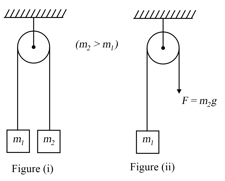A block of mass is placed over smooth wedge of mass and a force is applied on wedge as shown in figure. Find minimum possible value of force so that resultant force on block becomes
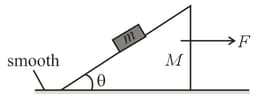


Important Questions on Laws of Motion
Sphere is placed between two smooth wedges, and wedges are given velocities as shown in the diagram. Velocity of centre of sphere in vertical direction will be
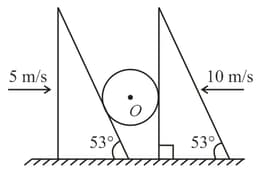
In the arrangement shown in figure, coefficient of friction between and is and remaining all surfaces are smooth, pulleys are ideal, find minimum value of force as shown in figure, so that block remains at rest with respect to
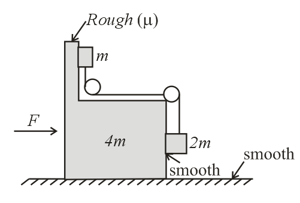
In the shown diagram there is no friction between and inclined plane, while coefficient of friction between and is Maximum possible value of angle so that there is no sliding between and
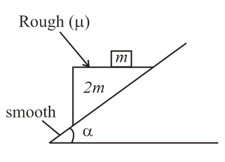
Find value of shown in the diagram so that system remains in equilibrium, all the surfaces are smooth and wedge is fixed.
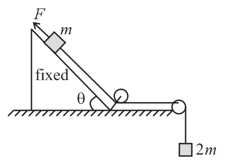
A block of mass is placed over rough horizontal plank of mass which is placed over smooth surface as shown, find maximum value of so that block does not fall from the plank (length of plank is )
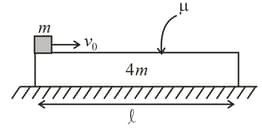
Consider the shown arrangement. All pulleys are massless and strings are ideal. Coefficient of friction between block and surface is force is applied on so that block does not move. Then the value of is. (Given mass of each block and are )
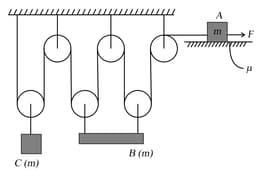
A block of mass is placed on a horizontal surface. It is tied with an inextensible string that passes through ideal pulleys. A mass is connected to the pulley as shown. For what value of the block will accelerate towards the fixed pulley?
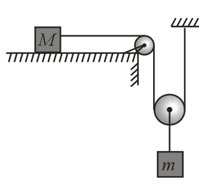
An arrangement of pulleys and blocks is shown in the figure. The two pulleys and the strings are ideal. If then which of the following(s) is/are wrong?
